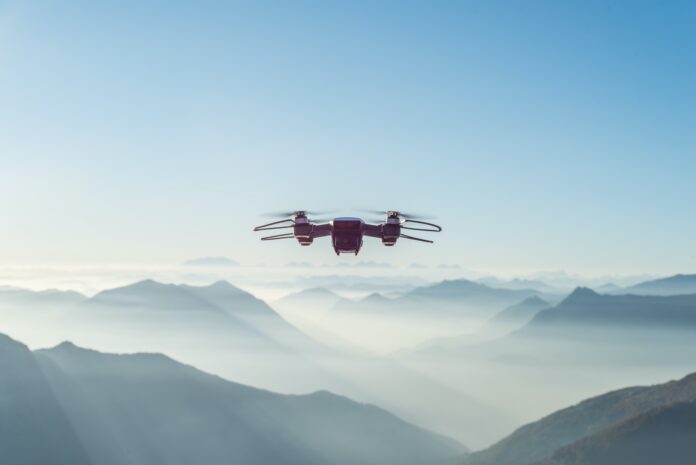In the world of drones, every component matters – especially your micro SD card. From storing precious footage to impacting flight performance, the right micro SD card can make a world of difference. In this article, we’ll explore five ways you can maximize your drone’s performance with the perfect micro SD card.
Understanding the Role of Micro SD Cards in Drones
A micro SD card, nestled comfortably in your drone, is nothing short of a digital locker. Its primary duty? Safeguarding all those beautiful, soaring views you capture during your drone’s flight.
Now, you might think – it’s just storage. I capture footage, it saves it, end of story. But oh, dear reader, it’s much more than a simple custodian of your aerial cinematography endeavors. It’s a vital cog in the magnificent machine that is your drone.
Did you know that a sub-par SD card can actually stifle your drone’s performance? It’s true. Consider a scenario where your drone is zipping through the sky, capturing high-resolution video. The pace is frenetic. The frames per second? Quite high. Now, an underperforming SD card might struggle to keep up with this relentless data flow, causing a bottleneck effect. And what happens when traffic is congested? Chaos. Frame drops, lag, corruption of footage – you name it.
Conversely, a high-quality, high-speed SD card is like a champion marathon runner, effortlessly keeping pace with the inflow of data, ensuring smooth operation, and uninterrupted recording. So, in a nutshell, picking the right drone micro SD card can influence your drone’s performance quite significantly. But how do we identify this ‘right’ card, you ask?
Choosing the Right Size and Speed
Settle in, dear reader, as we venture into the world of sizes and speeds, much like Alice through the looking glass. ‘Tis a world both mysterious and compelling, as understanding the nuanced dance of size and speed is pivotal to maximizing your drone’s performance.
When we talk about size in the realm of micro SD cards, we’re referring to capacity. It’s a bit like the size of your backpack. The larger it is, the more goodies you can stash inside. But before you rush out to buy the SD card with the largest capacity you can find, ponder this: how much space do you actually need? If you’re recording 4K videos, they’ll gobble up more space than HD videos. Frequent flyers, professional photographers, or folks shooting longer videos might need bigger cards.
As for speed, think of it as the agility of a relay runner passing the baton. The speed of an SD card determines how quickly it can receive data (write speed) and relay it for playback (read speed). And just like our metaphorical runner, swiftness is key. Slower cards might cause your drone to stutter during recording, missing that perfect shot. So, look for cards boasting high read/write speeds, especially if you’re capturing high-resolution footage.
Importance of Durability and Reliability
Dive with me into the turbulent waters of drone flights. Up in the air, exposed to the whims of weather and the inevitability of rough landings, your drone’s micro SD card must be more than just a data storehouse. It has to be a veritable Hercules, resistant to the elements and relentless in its performance.
Durability in micro SD cards is akin to resilience in the face of adversity. Can your card withstand extreme temperatures, both freezing winters and scorching summers? How about a sudden downpour? It is crucial to choose a micro SD card that can resist harsh weather conditions to prevent unexpected data loss. You wouldn’t want your drone’s bird-eye view of a stunning sunset to vanish into thin air, would you?
Another key aspect to consider is shock resistance. In an ideal world, all drone flights would be smooth sailing. But alas, the reality often involves a bump or two. A drop from a significant height, a collision, or even a rough landing could spell disaster for a less robust micro SD card. Therefore, picking a shock-resistant card is like fastening a safety belt for your precious data.
Of course, reputability goes hand in hand with reliability. There are well-established brands in the market known for their durable and reliable micro SD cards. While I can’t name names, a quick online search or visit to a tech forum could steer you in the right direction.
In conclusion, a durable and reliable micro SD card is a silent hero in your drone’s performance. By protecting your data from the weather’s caprices and the occasional rough handling, it ensures that no precious moment goes unrecorded.
Format Your Micro SD Card Correctly
Imagine standing in front of an empty canvas, ready to paint your masterpiece. But hold on! Before you can start, there’s one critical step you mustn’t ignore – preparing your canvas. Just like a painter primes their canvas, you need to format your micro SD card before it can safely store your drone’s footage.
Now, you might wonder, “What is formatting, and why is it important for micro SD cards?” Excellent question! Formatting is the process of preparing a storage device for use, which involves deleting all existing data and setting up a new file system. For micro SD cards, this is critical. It ensures that your drone and the SD card can communicate effectively, leading to optimal performance and reliable storage of your drone’s precious footage.
Here are some easy steps on how to format a micro SD card for drone use:
1. Insert your micro SD card into a card reader connected to a computer.
2. Locate the drive associated with your micro SD card.
3. Right-click on the drive and select “Format.”
4. In the formatting window, select the file system recommended by your drone manufacturer. (Typically, this will be either FAT32 or exFAT.)
5. Click “Start” to begin formatting.
Remember, formatting will erase all existing data on your micro SD card, so ensure you back up any important files beforehand.
Incorrect formatting, on the other hand, can lead to a slew of problems. It’s like trying to fit a square peg in a round hole. The drone might not recognize the micro SD card, leading to errors, corrupted files, or even an inability to record footage. That’s why it’s so important to format your micro SD card correctly.
Regular Maintenance and Updates
If you’ve ever owned a car, you know that regular maintenance is key to its longevity. The same principle applies to your drone’s micro SD card. It’s not just a ‘set it and forget it’ situation. Instead, it’s more like tending to a garden. You’ve planted the seeds (or in this case, stored your data), but you need to water and tend to it regularly for the best yield.
How do you go about maintaining your micro SD card, you ask? Well, let’s take a look:
1. Safely Remove Your Micro SD Card: When it’s time to remove the card from your drone, make sure you switch off the device first. Suddenly yanking out the card can lead to data corruption. Always remember to play it safe, not fast and loose.
2. Clean the Micro SD Card: Just like anything else, micro SD cards can get dirty too. Dust, dirt, and grime can accumulate on the contact points. Use a soft cloth or a can of compressed air to gently clean these areas. But remember, be gentle. You don’t want to damage the card.
3. tore Your Micro SD Card Safely: When not in use, store your micro SD card in a dry and cool place. And definitely keep it away from magnets. Much like comic book archenemies, magnets and micro SD cards don’t mix well.
4. Keep the Firmware Updated: Just like your drone, your micro SD card’s firmware needs to stay updated. Firmware updates can improve performance, fix bugs, and add new features. It’s like giving your micro SD card a shot of adrenaline. But always remember, before updating the firmware, back up your data.
The mantra of regular maintenance might seem tedious, but trust me, the benefits far outweigh the effort. You’ll be rewarded with a micro SD card that performs optimally, extends your drone’s life, and secures your footage.
Conclusion
In the grand scheme of drone flight, your choice of micro SD card might seem minor, yet it wields monumental influence over performance. It’s your key to unlocking potential, a tiny yet mighty component that bolsters your drone’s capabilities. Remember the cardinal rules we’ve discussed—understanding the role of the SD card, choosing the right size and speed, emphasizing durability, formatting properly, and regular maintenance. As you equip your drone with the perfect micro SD card, you are priming it not merely for flight, but for the extraordinary. So, make the choice that propels your drone towards stellar performance. Happy flying!





















